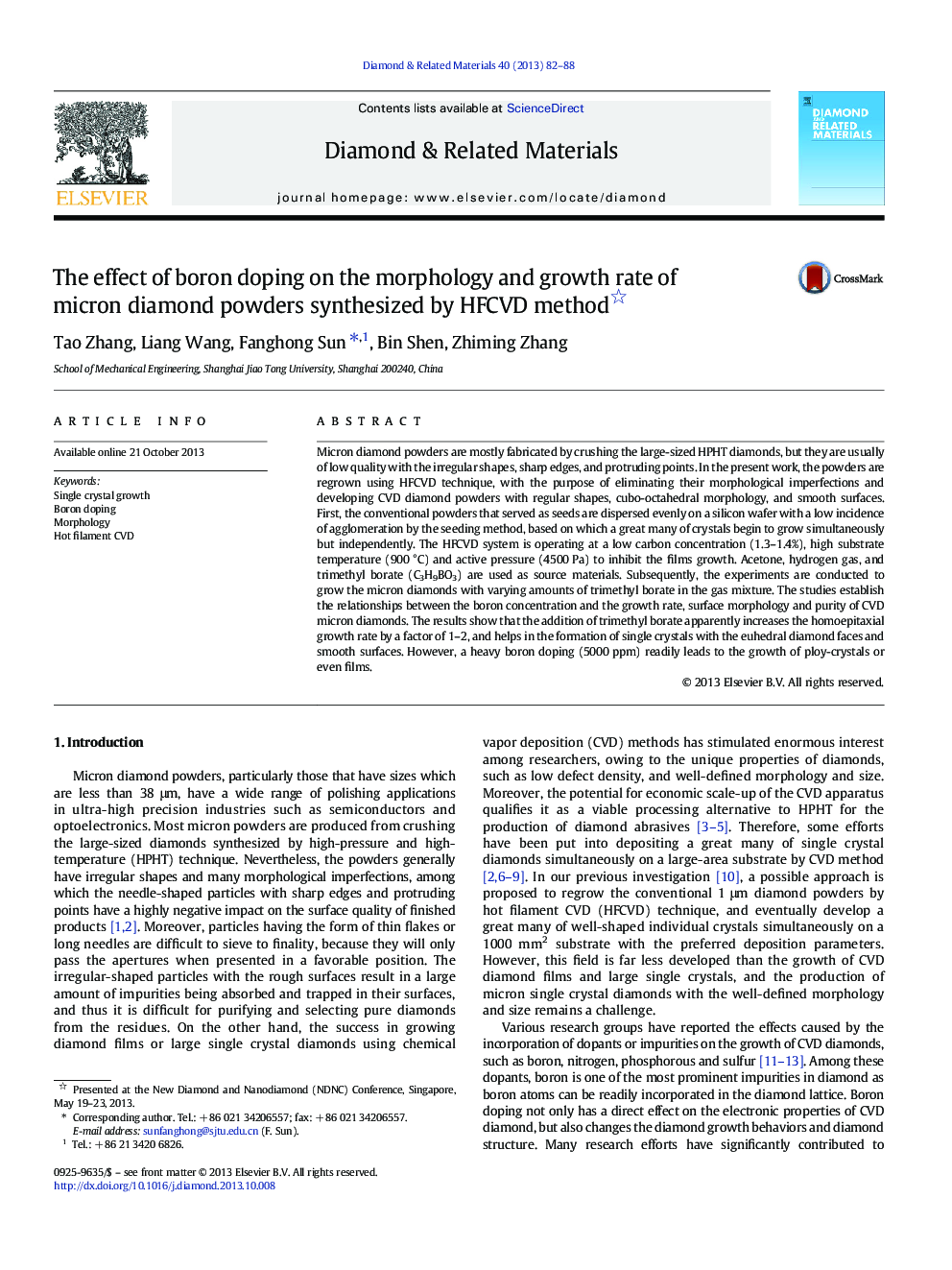| Article ID | Journal | Published Year | Pages | File Type |
|---|---|---|---|---|
| 702159 | Diamond and Related Materials | 2013 | 7 Pages |
•Conventional micron diamond powders are regrown in a HFCVD apparatus.•Boron doping improves the growth rate and morphology of single crystal diamonds.•Heavy boron doping increases the spontaneous nucleation on the silicon wafers.
Micron diamond powders are mostly fabricated by crushing the large-sized HPHT diamonds, but they are usually of low quality with the irregular shapes, sharp edges, and protruding points. In the present work, the powders are regrown using HFCVD technique, with the purpose of eliminating their morphological imperfections and developing CVD diamond powders with regular shapes, cubo-octahedral morphology, and smooth surfaces. First, the conventional powders that served as seeds are dispersed evenly on a silicon wafer with a low incidence of agglomeration by the seeding method, based on which a great many of crystals begin to grow simultaneously but independently. The HFCVD system is operating at a low carbon concentration (1.3–1.4%), high substrate temperature (900 °C) and active pressure (4500 Pa) to inhibit the films growth. Acetone, hydrogen gas, and trimethyl borate (C3H9BO3) are used as source materials. Subsequently, the experiments are conducted to grow the micron diamonds with varying amounts of trimethyl borate in the gas mixture. The studies establish the relationships between the boron concentration and the growth rate, surface morphology and purity of CVD micron diamonds. The results show that the addition of trimethyl borate apparently increases the homoepitaxial growth rate by a factor of 1–2, and helps in the formation of single crystals with the euhedral diamond faces and smooth surfaces. However, a heavy boron doping (5000 ppm) readily leads to the growth of ploy-crystals or even films.
